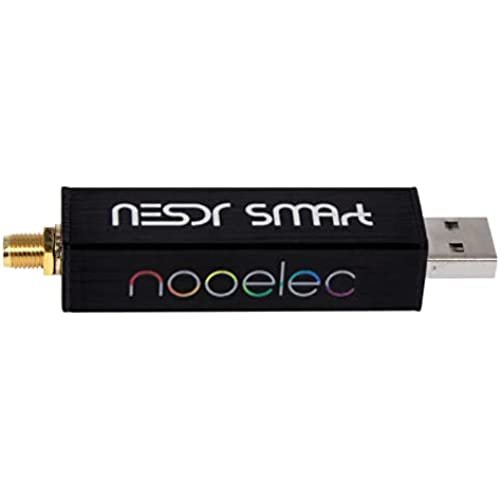
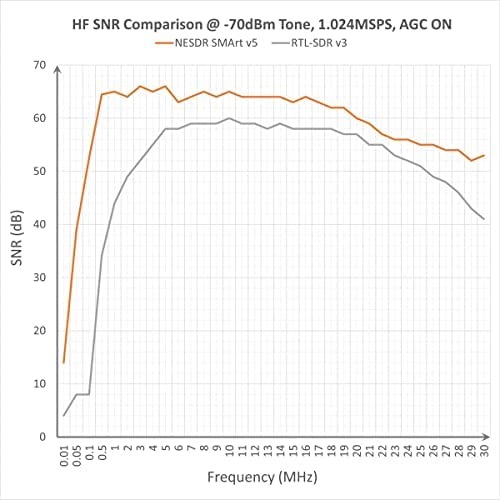
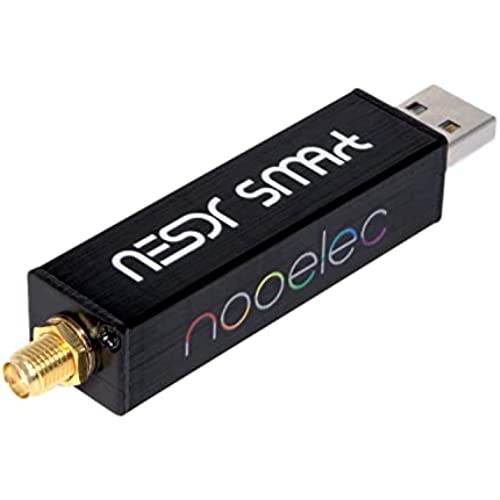
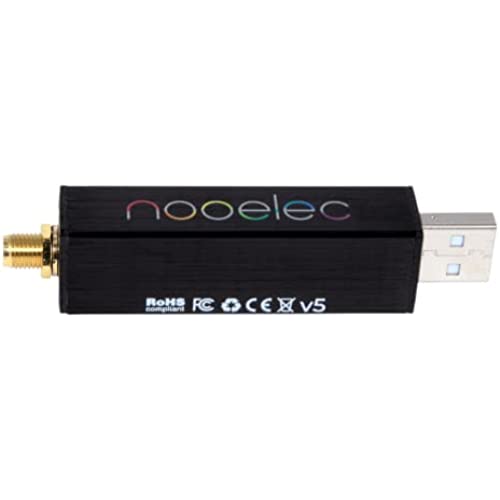
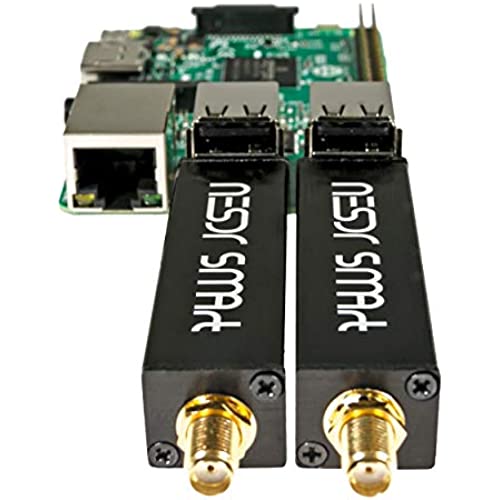
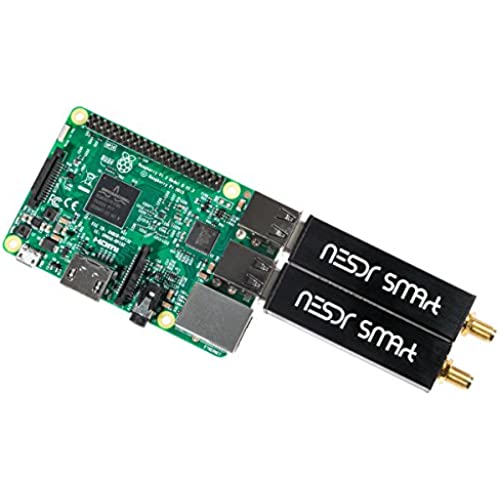






Nooelec RTL-SDR v5 SDR - NESDR Smart HF/VHF/UHF (100kHz-1.75GHz) Software Defined Radio. Premium RTLSDR w/ 0.5PPM TCXO, SMA Input & Aluminum Enclosure. RTL2832U & R820T2 (R860)-Based Radio
-

Jennifer
Greater than one weekIve been using UniTrunker software with a cheaper receiver that had the RTL2832U & R820T Tuner. It worked, but drift corrections were massive, the receiver was easily overloaded, and sensitivity/selectivity was not up to par. This little NooElec receiver basically fixes all of those issues for just a few dollars more. Since it uses the same receiver and tuner, it was a simple drop in replacement of my other receiver. It took off and began working immediately. I track a VHF trunked P25 system that has simulcast issues from time to time. It can really whack the receivers while trying to listen to distant towers. I wont say this NooElec receiver is completely immune to the RF onslaught but it is heads and tails above slightly cheaper versions. I also attempted to listen to an adjoining state 800 P25 system. My old receiver would BARELY register a control channel while the NooElec, using same antenna and gain settings, is easily able to hold the tower and provide reliable decode over 60ish air miles. It also comes with a real connector!!!! Those infuriating MCX connectors so commonly seen are completely negated by the NooElec and its SMA connector. Overall, if your software requires a receiver with the RTL2832U & R820T Tuner, it is hard to beat the NooElec with radios even twice as expensive. Very happy with the upgrade.
-

Jonah D Hust
> 3 dayIve purchased five of these over time. Only one died of natural causes. I believe it was heat, but it could have been due to my use case. Overall, works perfectly with little to no drift. Just buy it.
-

Bob
Greater than one weekWorks great - The product description did not say it needed an SMA male to SO239 connector to attach to my antennas that use PL259 connectors. Once I go that- the SDR worked great.
-

James E Bateman
14-06-2025Works great!
-

dave71203
> 3 dayas described, neat little receiver has many applications
-

Mark
> 3 dayVery good looking unit. Good luck making the software work. I finally got Airspy to work with it. Took days to figure it out and I am a retired computer tech.
-

David W. Malicki
> 3 daySet up was easy. Works as it should.
-

John Tanner
> 3 dayI purchased this product in order to try receiving satellite images from NOAA weather satellites. It worked incredibly well! I can also listen to amateur radio bands and FM radio. When paired with a program like SDR Sharp, the opportunities to use this product are boundless!
-

Dr. Jaquan Nikolaus
> 3 dayThis is the one to get if you want to tinker with RTL SDR. Nice case for shielding , SMA connector, and dead-on frequency. Good price too.
-

Harry Britton
> 3 dayIt has the same images as other SDR’s with the same chipsets. Many optional filters and preselectors available.
